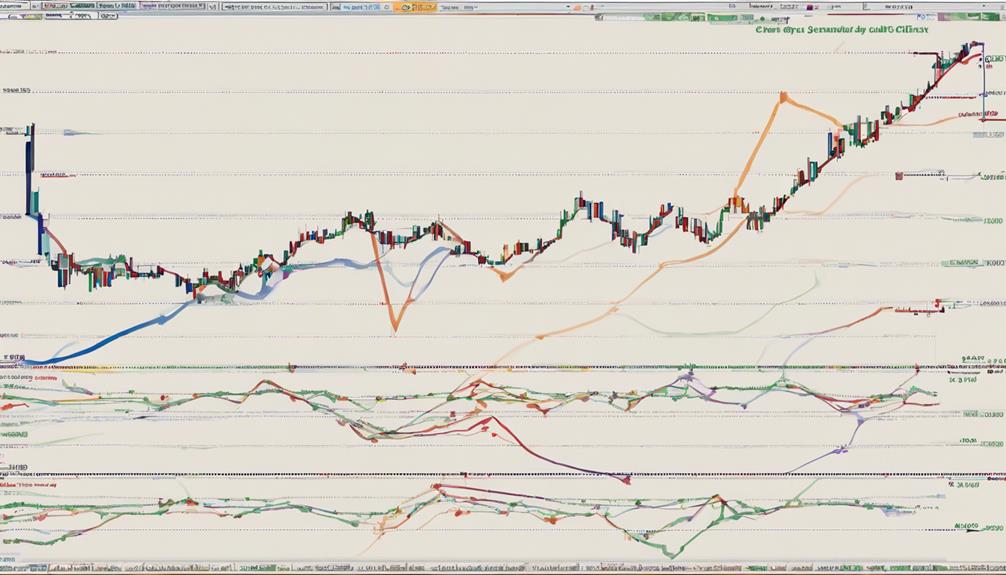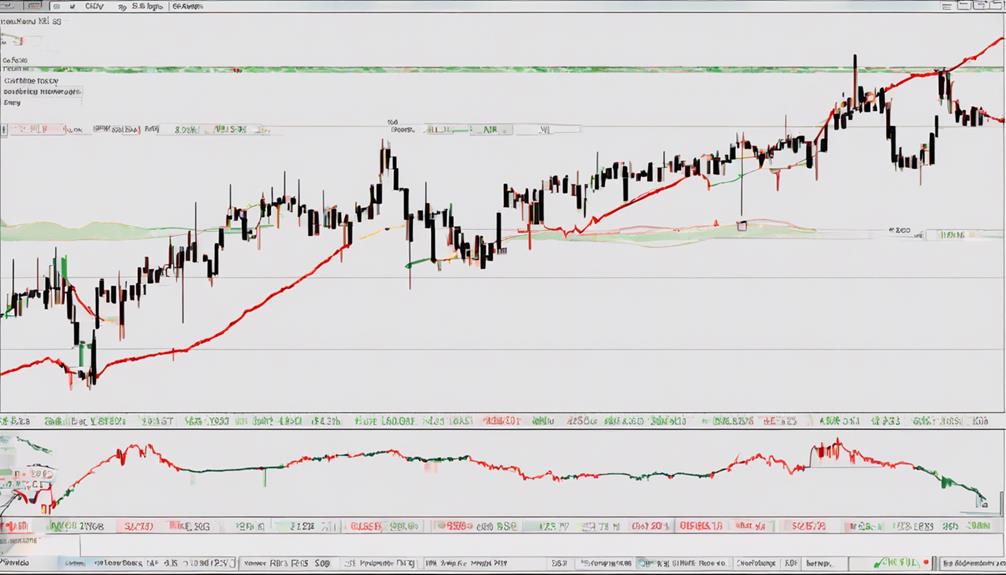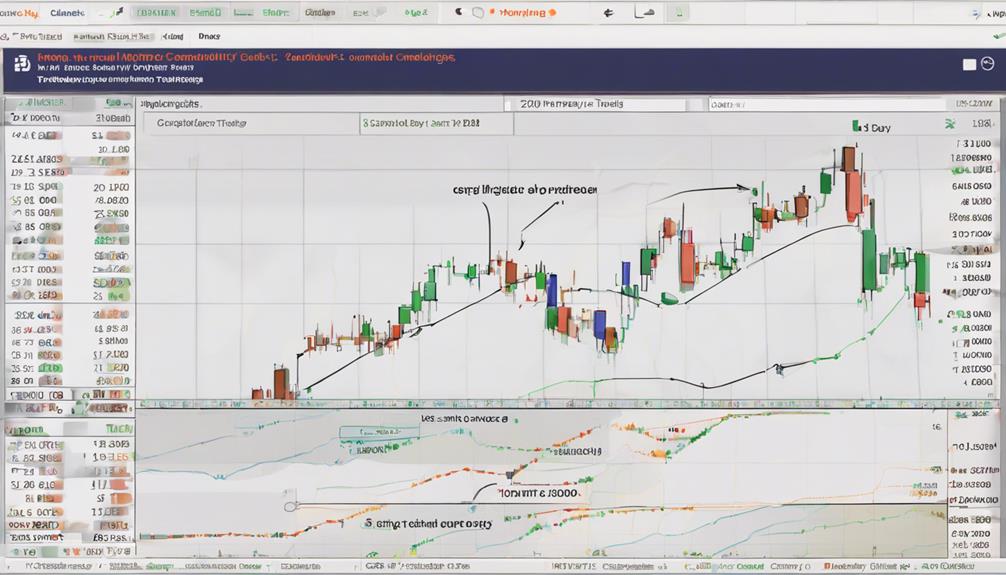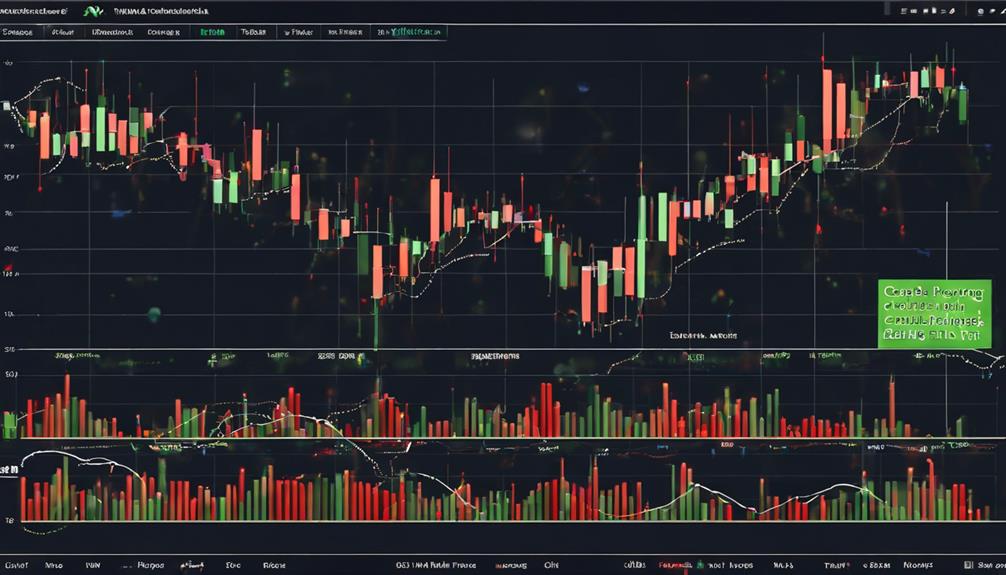As you navigate the intricate landscape of commodity trading, imagine moving averages as your compass, guiding you through the ebbs and flows of the market.
Understanding the nuances of these averages can be the key to unlocking profitable opportunities and avoiding pitfalls. By unraveling the complexities of different moving averages, honing in on the right one for your strategy, and mastering advanced techniques, you'll gain a deeper insight into how to leverage this powerful tool effectively.
Types of Moving Averages
When trading commodities, understanding the different types of moving averages is crucial for analyzing price trends effectively. Simple moving averages calculate the average closing price over specific periods, providing a smooth trend line.
On the other hand, Exponential moving averages give more weight to recent data points, reacting quicker to trend changes. The golden cross, where a short-term moving average crosses above a long-term moving average, signals a potential bullish trend.
Conversely, the dead cross, when a short-term moving average crosses below a long-term moving average, indicates a potential bearish trend. By observing the convergence or divergence of two moving averages, traders can gain valuable insights into potential trend reversals in the commodity markets.
Selecting the Right Moving Average

For optimal trend analysis in commodity trading, selecting the appropriate moving average plays a critical role in determining signal sensitivity and trend smoothness. Shorter-term moving averages are more responsive to price action, aiding in identifying turning points, while longer-term moving averages provide smoother trends and potential support and resistance levels.
The choice of moving average period, such as 10-day or 50-day, impacts the accuracy of signals. Traders can experiment with different combinations of moving averages to suit their trading style. Exponential moving averages, by giving more weight to recent data, are adept at capturing rapid changes in trends.
Understanding how various moving averages interact is crucial for spotting key trends and potential entry/exit points in commodity trading using technical analysis tools.
Using Moving Averages for Entry

Using moving averages for entry assists traders in confirming trends and making informed trading decisions. When the short-term moving average crosses above the long-term moving average, a bullish signal is generated, indicating a potential entry point.
This crossover strategy helps traders identify optimal entry and exit points in commodity markets. By timing entry points based on moving average crossovers, traders can capitalize on potential price movements and reduce the risk of false signals.
Additionally, incorporating momentum indicators like the Relative Strength Index can further validate entry decisions. Overall, utilizing moving averages for entry empowers traders to make strategic and well-informed trading decisions, enhancing their chances of success in commodity trading.
Incorporating Moving Averages for Exit

To effectively utilize moving averages for exit strategy in commodity trading, traders must closely monitor crossovers that signal potential trend reversals. When the short-term moving average falls below the long-term moving average, it may indicate a sell signal.
Incorporating moving averages for exit is a commonly used technique in popular technical analysis strategies. These averages help calculate the average price of a commodity over a specific period, aiding traders in determining when to exit a position.
How Can Moving Averages Help in Both Commodity and Stock Trading?
Moving averages are essential for excelling in stock trading. In commodity trading, they smooth out price data to identify trends and support/resistance levels. In stock trading, moving averages help spot entry and exit points while reducing market noise. They provide a clear picture of market direction and potential support areas.
Advanced Moving Average Strategies

Deploying a combination of multiple moving averages can provide traders with advanced strategies to confirm prevailing market trends effectively. Traders might use different time frames and data points when incorporating various moving averages to analyze the market.
Looking for crossovers of moving averages can signal potential trend reversals, especially when shorter-term averages cross above longer-term averages, indicating a bullish direction. These advanced strategies help traders make more informed trading decisions by understanding whether the market sentiment is bullish or bearish.
Combining moving averages with other technical indicators can further enhance the effectiveness of these strategies. Overall, using a variety of moving averages, including simple ones, can offer valuable insights into market trends and potential trading opportunities.
How Do Moving Averages Apply to Different Types of Trading, Such as Commodity and Stock Trading?
Moving averages are a versatile tool that can excel in stock trading as well as commodity trading. For stock trading, moving averages help identify trends and potential entry and exit points. In commodity trading, moving averages can also be used to analyze price movements and make informed trading decisions.
Frequently Asked Questions
Which Moving Average Is Best for Commodity Trading?
For commodity trading, the best moving average varies based on your strategy and timeframe. Consider using a combination like the 50-day and 200-day for trend confirmation. Experiment with different averages to find what suits your approach.
What Is the Moving Average of Commodities?
The moving average of commodities is a calculation that determines the average price over a specific period, aiding in trend identification and support/resistance level determination. It helps you gauge market direction based on price positioning relative to the average.
Which Chart Is Best for Commodity Trading?
For commodity trading, the line chart is optimal. It displays closing prices, aiding in trend and reversal identification. This chart's simplicity and focus on crucial data make it an effective tool for making informed trading decisions.
What Are the 4 Moving Average Strategies?
To identify trends in commodity trading, utilize moving average strategies like the Golden Cross indicating a bullish trend, Dead Cross signaling a bearish trend, crossovers for potential reversals, and positioning of short-term vs. long-term averages for trend confirmation.
Conclusion
In conclusion, mastering moving averages is like having a compass in the turbulent sea of commodity trading. By understanding the different types, selecting the right one, and using them for entry and exit points, you can steer your trading strategy towards success.
With advanced strategies at your disposal, you can navigate the market with precision and confidence. Embrace moving averages as your guiding star in the world of commodity trading.


